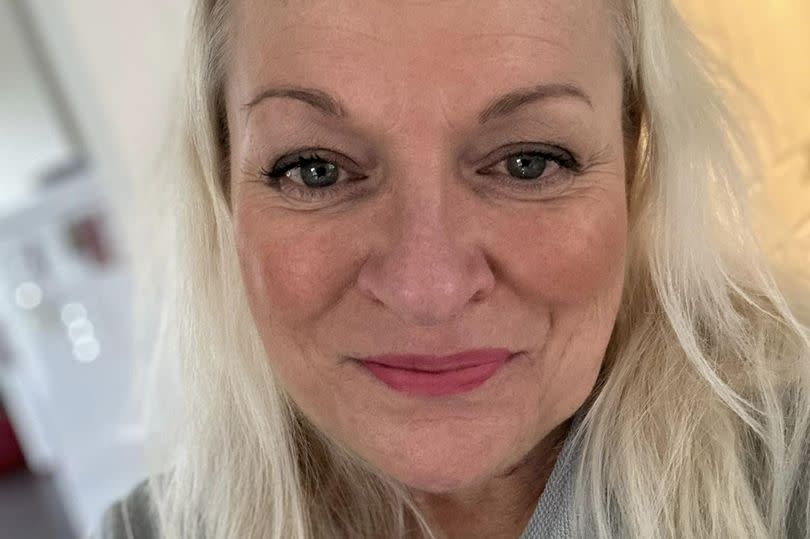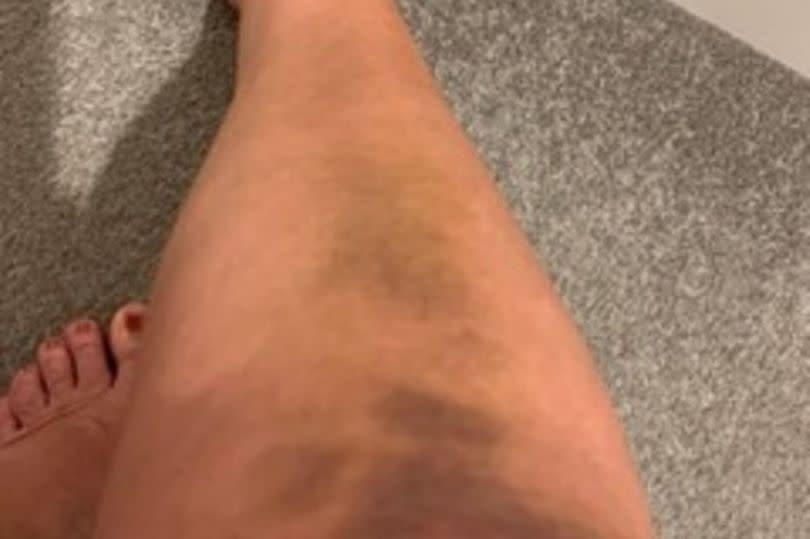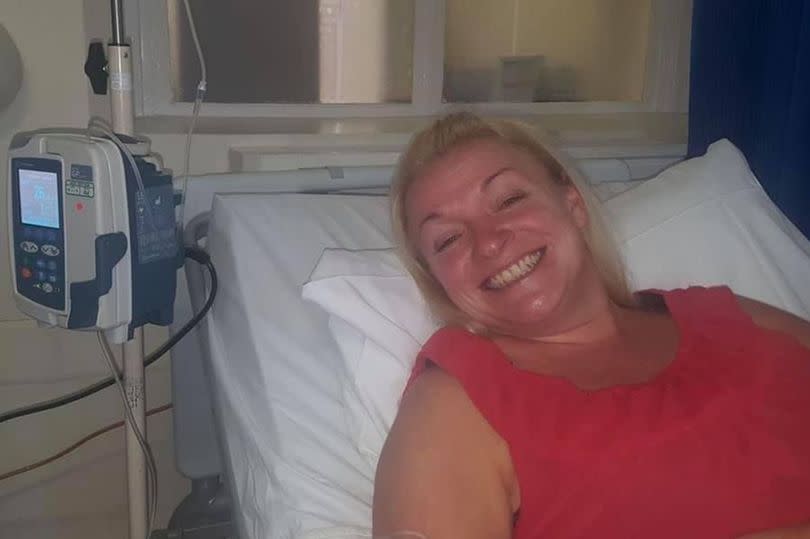'On holiday in Malta I suddenly stopped walking, doctors had no idea why'

On holiday in Malta with her late husband Karen Long had to call out to him- when she suddenly found she could no longer walk. It was one of the first symptoms of a rare and debilitating condition.
Karen Long has had to adjust her life to living with Stiff Person Syndrome – the medical condition that has been making headlines since Celine Dion revealed she is suffering from it too. For Karen, the condition causes her to freeze on the spot and then fall over when she is startled.
The debilitating illness made it impossible for her to continue her successful career as a software engineer, has destroyed all the cartilage in her knees from falls, and often leaves her body battered and bruised. On top of this, muscle spasms and limbs locking into place can cause excruciating pain for hours at a time.
Recalling an early episode, she said, “I remember being in Malta and my late husband, James, walked off. And I said ‘Come back!’ And he asked why and I said ‘I can’t walk’. And then we had a few times when he would go to go across the road, and I couldn’t. He was like ‘What are you doing?’ And I would be like ‘I can’t’… Your mind cannot control the muscles.”

Now 53, the proud mum-of-one was first diagnosed with the condition when she was 45 – but this was after years of doctors failing to understand what was wrong. She admits that the tears she shed when she was first told she had the incurable disease were not for the reason many might think.
“Most neurologists have only seen a couple of people in their lives because it is one in a million,” she recalls of the moment she was given a diagnosis. “ He said, ‘You’ve got something called Stiff Person Syndrome’ and he said it’s incurable and so I was a bit in shock and then I burst into tears.
“He was like ‘It’s okay, it’s okay. We can do stuff.’ But I was like ‘Actually I’m just relieved.’ Because prior to all of this, I was having MRI scans on my back, I was being told I just had anxiety and stress and all along it was the build-up of SPS.”
Stiff Person Syndrome, or SPS, is a neurological condition where the body begins to attack its own glutamic acid decarboxylase (GAD) proteins. This can cause muscles to tighten to an unbearable degree, prompt limbs to lock in place, and provoke uncontrollable muscle spasms.
Complications can particularly arise if muscles seize around major organs like the heart and lungs. The cause of the condition is unknown, and there is currently no cure. Karen says she is grateful to Celine Dion for speaking out about having the condition as it has raised awareness, but she fears other sufferers could be misdiagnosed like she was.
“When it first happened, it felt like a trapped nerve and it wouldn’t release. And that’s what it does. It just gets tighter and tighter and tighter… It does often get mistaken for fibromyalgia (a different medical condition that causes pain throughout the body),”
Karen explained, going on to recall how her earliest symptoms were wrongly diagnosed. “My back was seizing, and I was finding it hard to walk or do things. And that’s when they said it was anxiety and stress and they put me on antidepressants thinking that would make things fine. But it didn’t.”
Karen, who is from Romsey in Hampshire, now walks with a mobility walker and found it particularly difficult to walk in open spaces where there were no railings or surfaces for support. It was when other people noted that she was moving around with extra caution that Karen realised she had started changing her habits subconsciously.

She recalls that her current partner, Andy, who she met through a dating site several years after her husband passed away, noted some unusual behaviours. “Andy couldn’t understand why I couldn’t go up the steps (to my house) and it was because there was no bannister.
"Or I would walk around the back of the car and the front of the car to get into the car. And he used to look and go, ‘Why did you do that?’ And I would ask ‘Do what?’ If I had to walk across the field at the summer fete, I would walk all the way around the edge. I started to believe that I was nuts. And it turns out it was because it’s a massive fear of open spaces.”
Karen ended up being diagnosed with SPS by chance. After suffering an excruciating spasm attack that affected the lower part of her body, she was admitted to a gynaecological ward.
“Because the spasms were all from the waist down, they assumed it must be lady issues. And it wasn’t,” she recalls. “A neurologist was doing rounds and asked what was happening and then said, ‘I’d like you to come and see me’,” she recounts.
He submitted her for a GAD test; a blood test that counts antibodies, and was alarmed when the results came in. “Most people have a GAD count, which is how many antibodies per milligram of blood, of eight or nine. My count is in excess of 80,000.”

Karen was then sent for an Electromyography evaluation to see how her muscles reacted to stimulation by having needles inserted into her leg and back muscles. “I had no control over those muscles whatsoever and that’s how I got my diagnosis,” she said.
To manage the symptoms, she undergoes intravenous immunoglobulin (IVIG) every four weeks. This is when immunoglobulin, or plasma, from blood donors is intravenously injected into her bloodstream. The body then attacks these foreign antibodies, taking attention away from her body.
The infusion takes roughly four hours and isn’t without risks. “Having IVIG is more of a risk than the disease itself. It can cause you a stroke, chemical meningitis, or anaphylactic shock,” she explains. “And then the day after, you get flu symptoms, a migraine, all sorts. I’ve listed all of those for years and they are all the same. So I go ‘Oh yeah. The usual chest pains.’ I can check them off. After three days, normally, I start to feel the benefit and become more mobile. The pain is less.”
Karen, who is now a make-up and beauty blogger and can be found on Instagram and TikTok under the handle aggsy1211, hopes that having SPS in the headlines will help others who are yet to be given a correct diagnosis. “People are questioning the disease. Which is great,” she said. “If it means that just one person finds out they’ve got it, it means they can get the right medication to help them.”

 Yahoo News
Yahoo News 
